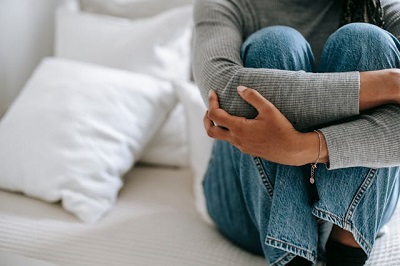What is The Most Obvious Pain Location in Pelvic Inflammatory Disease?
Pelvic inflammatory disease (PID) is a common condition of the female reproductive system, causing considerable discomfort and distress to patients, with pain being one of the main symptoms.

Many women experience varying degrees of pain after developing PID. However, when discussing the pain associated with PID, many wonder if there is a single most obvious pain location.
What is the most apparent pain location in PID?
The apparent pain location in PID varies depending on individual physical conditions; there is no single most obvious pain location. Generally, the prominent pain locations include the lower abdomen, lumbosacral region, pelvic area, and groin area:
1. Lower Abdomen
When inflammation occurs in the pelvis, the uterus, ovaries, fallopian tubes, and surrounding connective tissues are affected. These organs and tissues are in the lower abdomen, so inflammation often leads to lower abdominal pain.
Whether it is acute or chronic PID, most patients experience lower abdominal pain. Patients with acute PID have relatively severe pain, with menstrual pain and premenstrual pain becoming increasingly apparent. In severe cases, patients may need to take painkillers to relieve symptoms. Chronic PID patients have relatively subtle pain, manifested as abdominal pain but lasting longer, accompanied by lower abdominal swelling.
2. Lumbosacral Region
Due to the pelvis's anatomical location adjacent to the lumbosacral nerves, when inflammation in the pelvis spreads and stimulates the lumbosacral nerves, it can easily cause lumbosacral pain. Patients typically feel a sore, distending pain in the lumbosacral region, which may radiate to the lower limbs. Prolonged sitting or bending over can make this pain more pronounced, causing inconvenience in daily life and work.
3. Pelvic Cavity
Pelvic inflammatory disease may involve organs such as the uterus, fallopian tubes, and ovaries within the pelvic cavity, and pain may appear in different locations depending on where the inflammation occurs.
Furthermore, in more severe cases of pelvic inflammatory disease, pain may radiate to the groin area, inner thigh, and other regions. Moreover, suppose the inflammation spreads to organs such as the intestines or bladder within the pelvic cavity. In that case, it may also cause corresponding symptoms of the digestive or urinary systems, such as abdominal pain, diarrhea, frequent urination, urgency, dysuria, etc., which may also accompany varying degrees of pain.
It is important to note that the pain symptoms of pelvic inflammatory disease may not always be typical and can easily be confused with pain from other diseases. For example, gastrointestinal disorders, urinary system diseases, or lumbar spine diseases may also cause pain in the lower abdomen or lumbar-sacral region.
What to do if pain occurs?
If women experience pain in the areas mentioned above, especially accompanied by symptoms such as fever, increased vaginal discharge, abnormal menstruation, etc., they should promptly seek medical attention. Through gynecological examinations, ultrasound examinations, laboratory tests, etc., the cause of the pain should be identified for targeted treatment.
For patients with milder symptoms of pelvic inflammatory disease, treatment generally involves antibiotic therapy administered orally or intravenously to eliminate inflammation. Commonly used antibiotics include cephalosporins, fluoroquinolones, metronidazole, etc.
If antibiotic therapy is ineffective, herbal medicine such as Fuyan Pill, which clears heat, detoxifies, promotes blood circulation, and resolves stasis, can promote inflammation's absorption and dissipation, relieving pain symptoms.
If pelvic inflammatory disease progresses to form an abscess, surgical treatments such as abscess drainage or lesion removal may be necessary. After surgery, the Fuyan Pill can consolidate the treatment effect.
Women should pay attention to personal hygiene in daily life, keeping the external genital area clean and dry, maintaining moderate and hygienic sexual activity, avoiding multiple sexual partners, minimizing unnecessary uterine operations such as abortions, curettage, etc., and strengthening exercise to enhance overall physical resistance.
You may also be interested in:
Can Pelvic Inflammatory Disease Lead to Leg Pain?
previous pageCan Pelvic Inflammatory Disease Cause Intestinal Symptoms?
next page- Severe Endometriosis Treatment: Chronic Pelvic Pain Relief and Infertility Solutions
- Managing Adenomyosis: Easing Pelvic Pain and Heavy Menstrual Bleeding with Natural Approaches
- Daily Care Tips for Pelvic Inflammatory Disease Caused by Ureaplasma Urealyticum
- Is Fallopian Tube Blockage Causing Your Lower Abdominal Pain?
- Don't Let Pelvic Pain Trouble You! Traditional Chinese Medicine and Dietary Therapy to the Rescue
Testimonials
- Adenomyosis with Ureaplasma Urealyticum Cured by Fuyan Pill
- Tubal blockage with hydrosalpinx can be cured by TCM shortly
- Fuyan Pill Helps A woman with Adenomyosis Get Pregnant
- A Woman with Hydrosalpinx Is Cured with Fuyan pill
- Pelvic Inflammatory Disease Testimonials
- Irregular Vaginal Bleeding and Endometrial Thickening Cured by Fuyan Pill
- Pruritus Vulvae and Frequent Urination: Mycoplasma Infection Cured after 2 Courses



